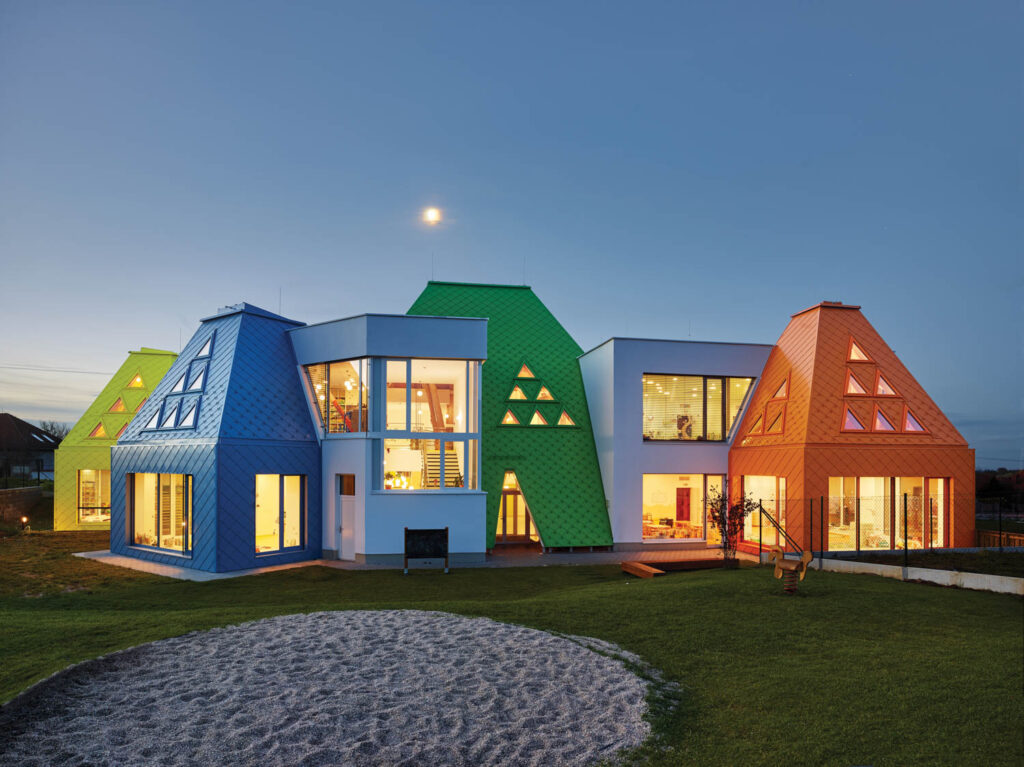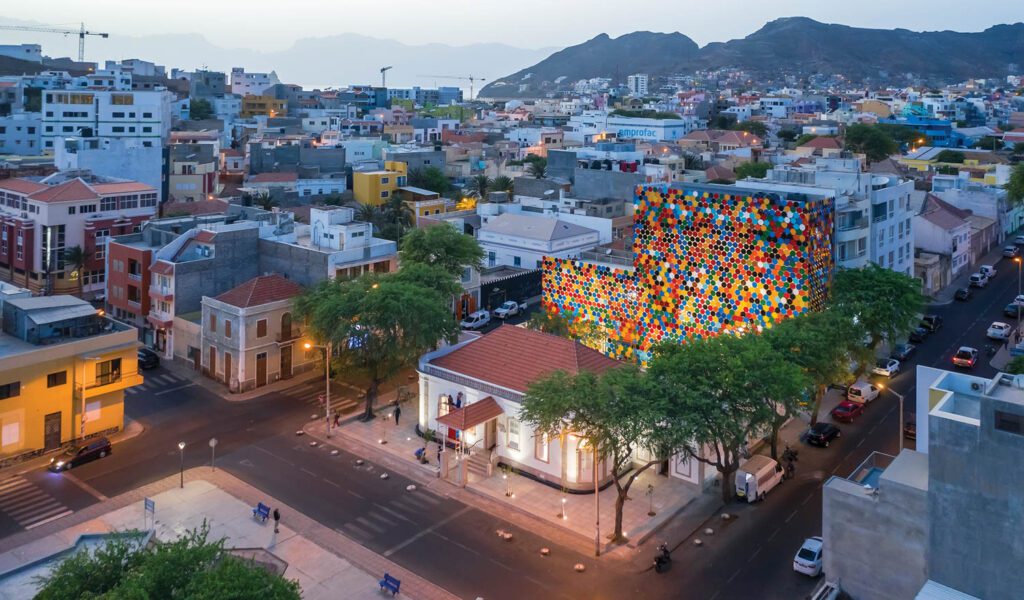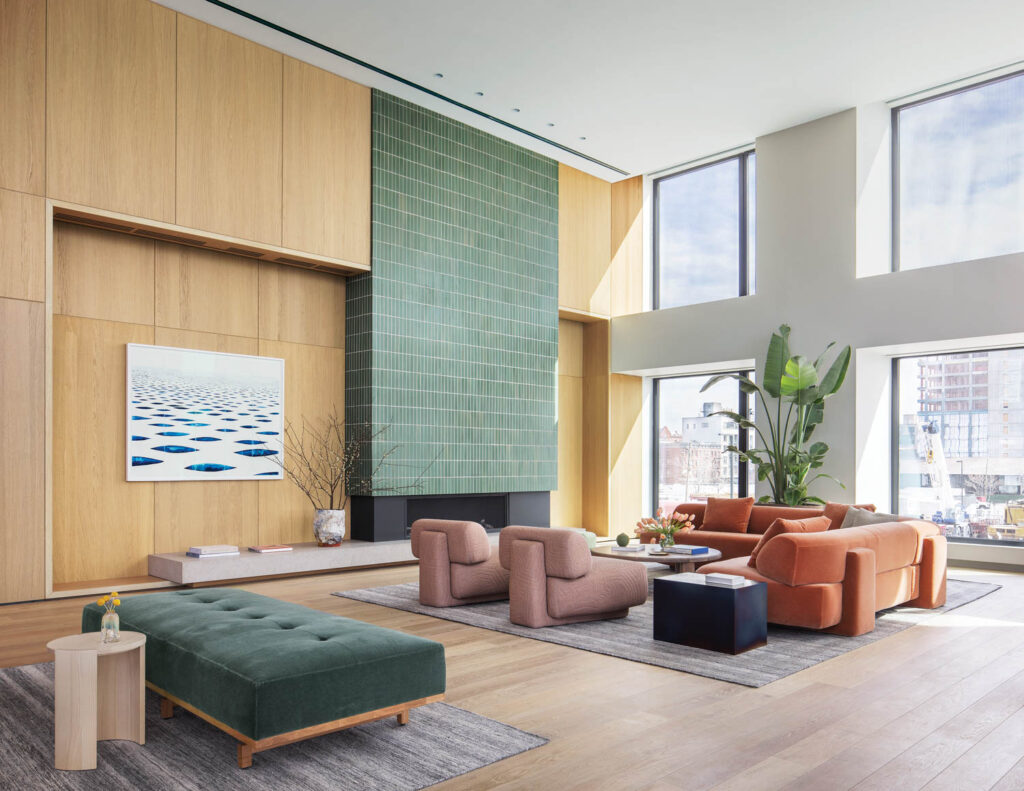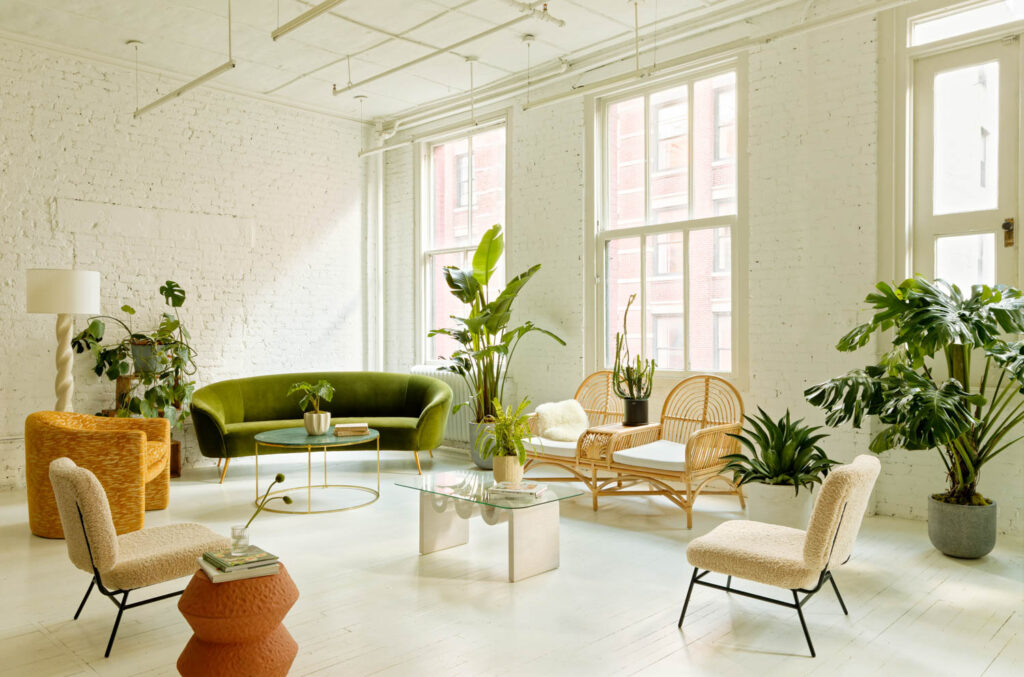
Inside the Museum of Applied Arts in Brno, Czech Republic
Founded in 1873, the Museum of Applied Arts in Brno, Czech Republic, is among the world’s 10 oldest such institutions, although, as its director Jan Press acknowledges, “It took another decade before the building itself was constructed.” A handsome, three-story Renaissance Revival–style palazzo by architect Johann Georg von Schön, who was also the museum’s first director, the building’s interiors were lavishly decorated with frescoes, stucco, stained glass, and other quattrocento-inspired embellishments.
“From the start, it was clear the museum would expand,” Press continues, which it did almost immediately. “During a 14-month remodel in 1888, its total space doubled.” The building was largely reconstructed in 1945, repairing severe wartime bomb damage and making multiple additions and reconfigurations. In 1961, the museum merged with the Picture Gallery of the Moravian Museum to create the Moravian Gallery, a multisite art museum—the country’s second largest—that now comprises six separate structures including Von Schön’s palazzo and the bright-yellow house where Josef Hoffmann was born.
Architect Ivan Koleček Preserves Museum History Through Design

Between 2019 and 2021, Czech architect Ivan Koleček—principal of an eponymous practice based in Lausanne, Switzerland, specializing in the restoration and conservation of historical buildings—completed another major renovation of the museum. “The aim was to come as close to the original shape as possible,” Press says, “preserving historical motifs and restoring damaged decorative elements without resorting to the use of replicas. Koleček also utilized his own contemporary style, characterized by simple, minimalist forms, which creates an interesting contrast between the old and the new.”
A good example of these juxtapositions is found in the atrium flanking the main lobby. The architect created the three-story volume by removing the ground-floor ceiling, opening the space to the huge skylight above, and flooding the adjacent lobby with daylight via a colonnade of soaring archways—a classical architectural form rendered in Koleček’s signature pared-down aesthetic. Equally minimal, but completely contemporary, are several glossy-white catwalks that zigzag overhead, not only linking various galleries but also providing platforms for up-close viewing of site-specific installations suspended in the atrium. Clad in aluminum panels and supported on rolled-steel girders, the sleek footbridges evoke the dynamic power of bullet trains speeding toward the future.
Museum Standouts Include Catwalks and Cloud-Shaped Terrace Canopy

Designed by Prague’s Studio Olgoj Chorchoj, the catwalks are one of many attention-grabbing interventions—others include a robotic café, a cloud-shape terrace canopy, and a pair of massive floor-to-ceiling cases for displaying ceramics and glassware—commissioned from leading Czech firms. These individuated spaces, permanent installations, and bespoke structures reflect a reconceptualization of the renovated museum, now marketed under the rubric ART DESIGN FASHION. “We don’t focus exclusively on any one of them,” Press explains. “Our goal is that each is perceived not separately, restricted to itself, but rather as part of a triunity. Art can be found in design and be fashionable; design and fashion can be artistic.” It’s a multilayered, boundary-erasing approach in which the three disciplines are showcased not only through exhibitions but also in the very look of the museum itself.
Arriving in the lobby, visitors are naturally drawn to the light and dynamism of the atrium glimpsed through its frame of monumental arches. There’s equivalent energy in another Studio Olgoj Chorchoj installation in which an icon of Czech aeronautical design—Karel Dlouhý’s L-13 Blaník glider from 1956—is suspended vertically next to the glass elevator. The sailplane remained in production for two decades and is still the most widely used glider in the world. Of course, Moravia and Bohemia are even better known for the fine glassware produced there since the 13th century. The museum, which has more than 11,000 pieces of glass and porcelain, commissioned designers Maxim Velčovský and Radek Wohlmuth along with edit! architects to create an open repository for the massive collection. The collaborators devised a system of stackable glass-and-steel display cases that spans two rooms—the glittering Light Depot, where walls, ceiling, and cabinet frames are stark white; and the moody Black Depot, with inky walls and obsidian metalwork—that offer dramatically contrasting experiences.
Graphics Chronicle Czech Product-Design History
Graphic designer Tomáš Svoboda provides more theatricality in the exhibition spaces he installed. The Cave, which offers a panorama of Czech product-design history, has walls lined with floor-to-ceiling grids of deep shelving on which 234 significant items from the 19th and 20th centuries are displayed. A steel viewing platform runs down the center of the room allowing visitors to peruse the collection from on high or to examine the elaborate coffers of the restored ceiling close above. Svoboda gets to address the 21st century in “2000+ Fashion,” a permanent exhibition of apparel and accessories created since the millennium by Czechia’s leading designers, including Liběna Rochová, who gets a large section to herself. Mannequins are arrayed on a revolving catwalk, its steampunk aesthetic referencing the nation’s well-developed DIY culture, while fresh-as-paint fashion photography flashes across a bank of video screens, pointing toward tomorrow.
Like Janus, architect Marek Jan Štěpán also looks to the past and the future in Café Robot, a small cube of a coffee bar, its walls, ceiling, and floor a checkerboard of backlit glass panels. Visitors to the café, which was inspired by the famous bedroom interior at the end of Stanley Kubrick’s 1968 movie 2001: A Space Odyssey, order coffee from a talking androgenic hologram that serves it via a robotic arm. “By far the most popular brew is the so-called Selfiecinno,” Press reports. “A camera takes a photo of the customer, which is then printed in edible ink on the foam in the cup.”

The principal of Atelier Štěpán practices interactivity on a grander scale with The Cloud, a diaphanous multimedia canopy floating above the ground-floor terrace. Made of aluminum, steel, glass, and a galaxy of LEDs, the nebulalike installation glows, changes color, and emits sounds in reaction to stimuli from the immediate environment. “It also alludes to the surrealist works of painter Josef Šíma,” Press observes, referencing the artist’s use of clouds as a symbol of creativity, imagination, and communication—all qualities on prominent display throughout the dazzling museum.
Walk Through the Museum of Applied Arts in Brno, Czech Republic


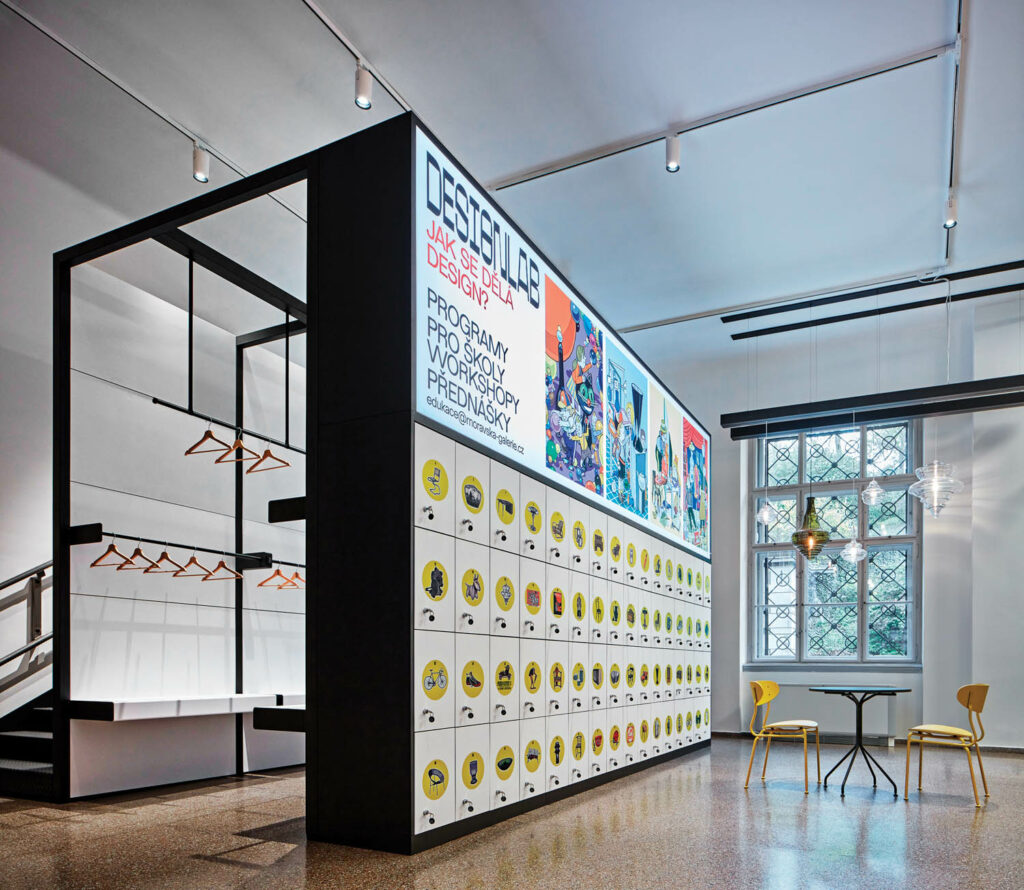








PROJECT TEAM
read more
Projects
7 Cultural Design Projects That Shine with Skill and Smarts
From an arts academy in Rome and a school outside New Delhi to a public library in New York, seven cultural projects shine with creative skills and smarts.
Projects
The Denver Art Museum Gets a Thoughtful Update
A comprehensive four-year overhaul of the multibuilding campus of the Denver Art Museum included both renovation and expansion.
Projects
A Destination-Worthy Addition to a Cape Verde Museum
See what makes this addition to a Cape Verde museum on handcraft, art, and design stand out, solidifying its status as a cultural icon.
recent stories
Projects
A Residential Complex Soars Over the Waterfront in Brooklyn
Two towers by three firms—OMA, Marmol Radziner, & Beyer Blinder Belle—add up to Eagle + West, a residential complex soaring over the Greenpoint waterfront.
Projects
A SoCal Home With Mid-century Influences and Bursts of Color
A classic mid-century hilltop house plays with color and material, resulting in a property that honors SoCal’s penchant for indoor-outdoor living.
Projects
Float Studio Transforms a SoHo Loft into an Airy Workplace for Sakara Life
For Sakara Life’s new SoHo, Manhattan workspace, Float Studio creates a light-filled loft, complete with residential accents to encourage collaboration.
